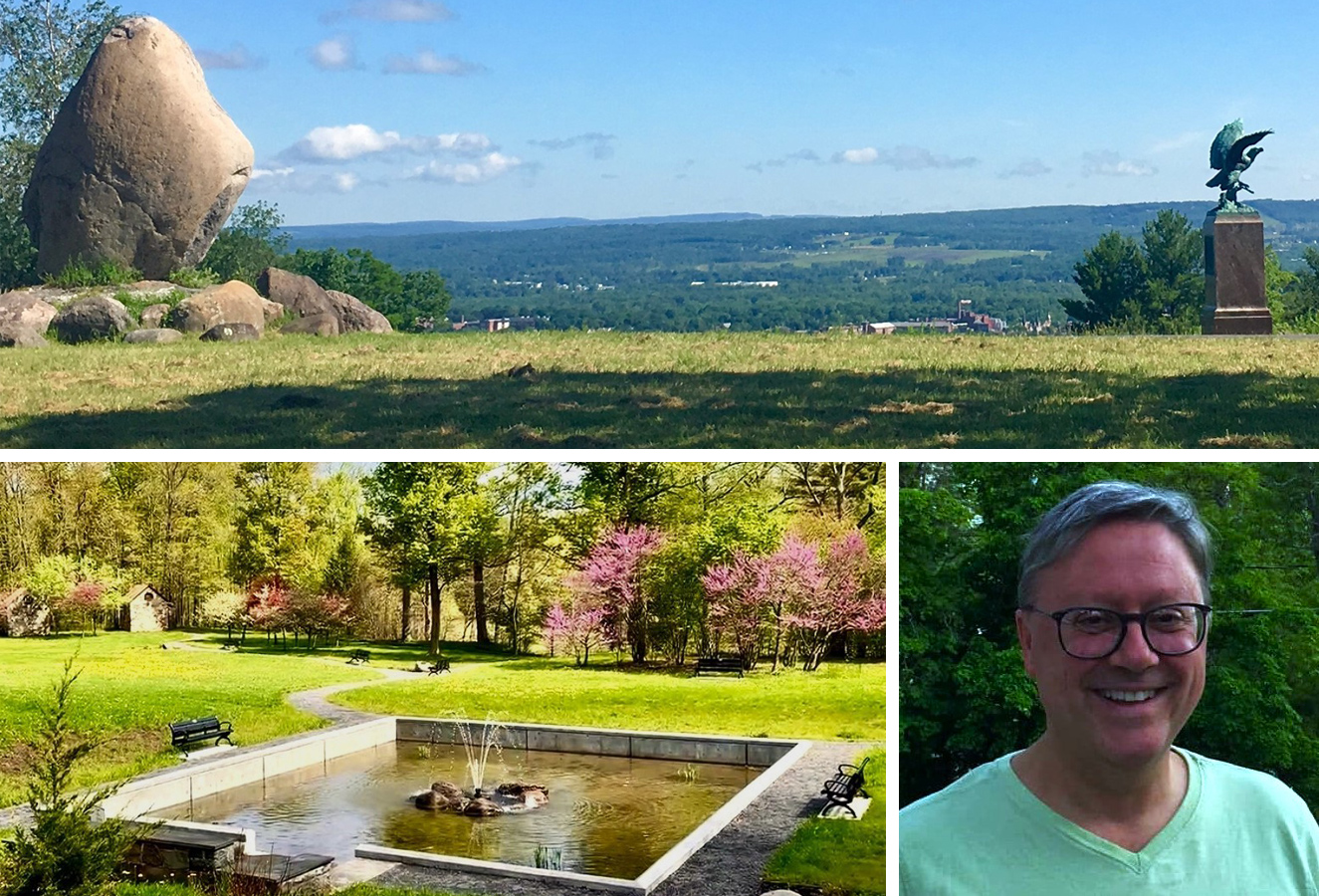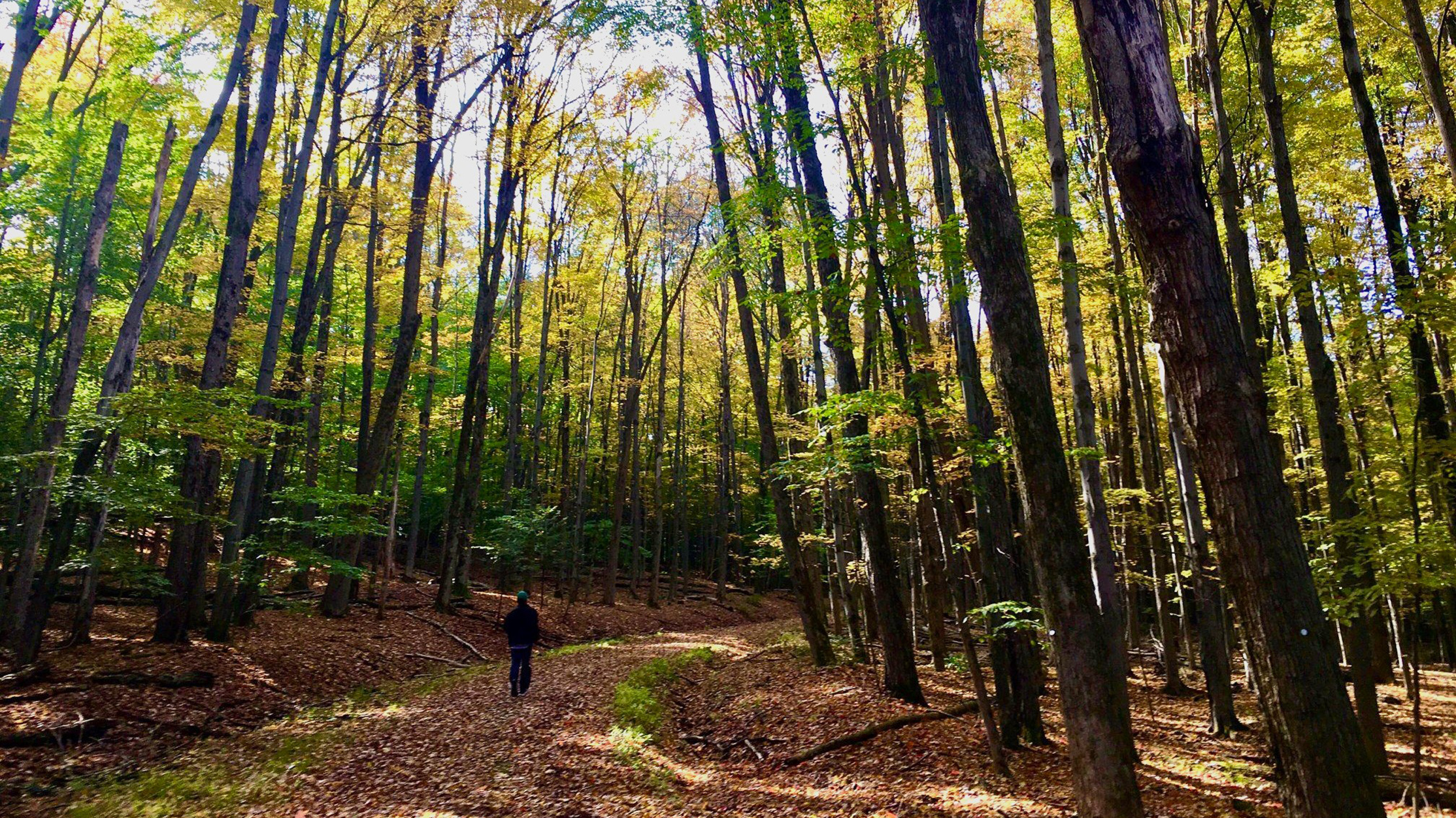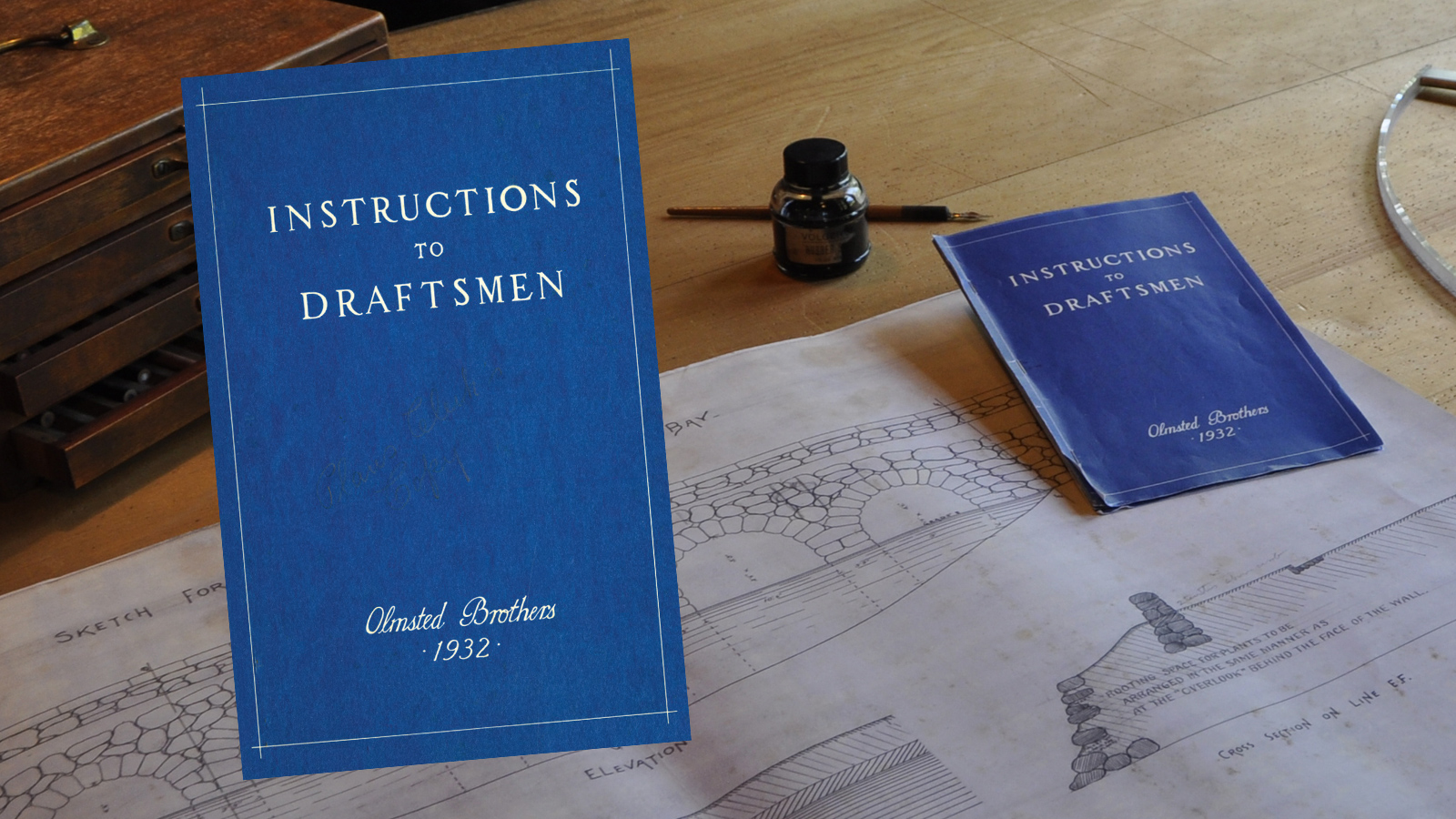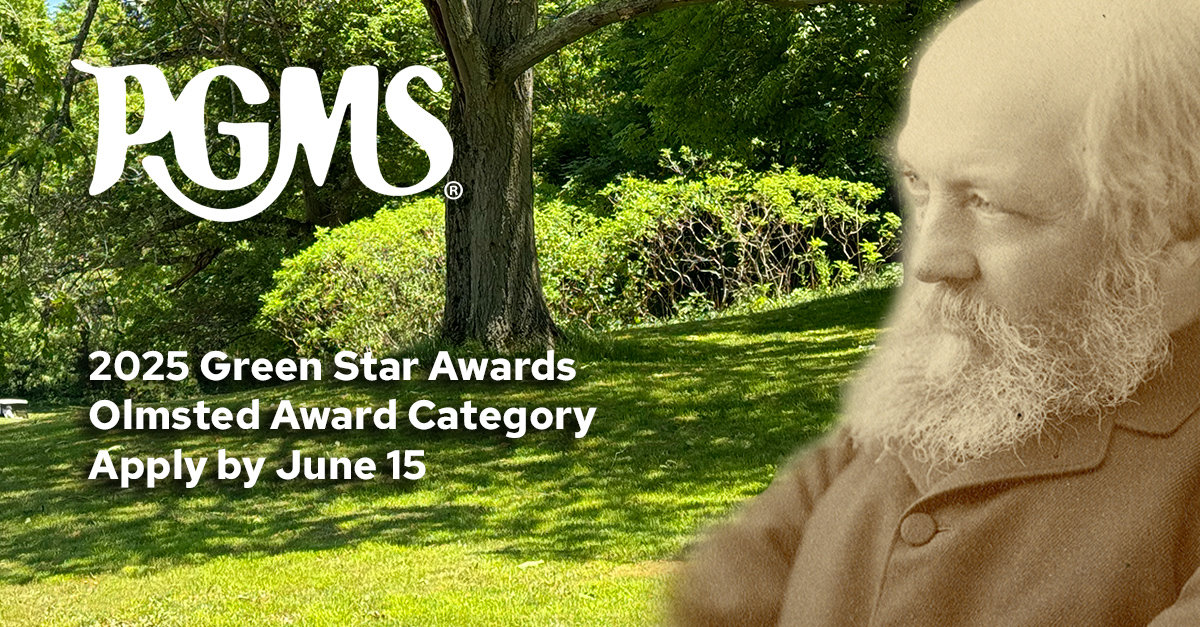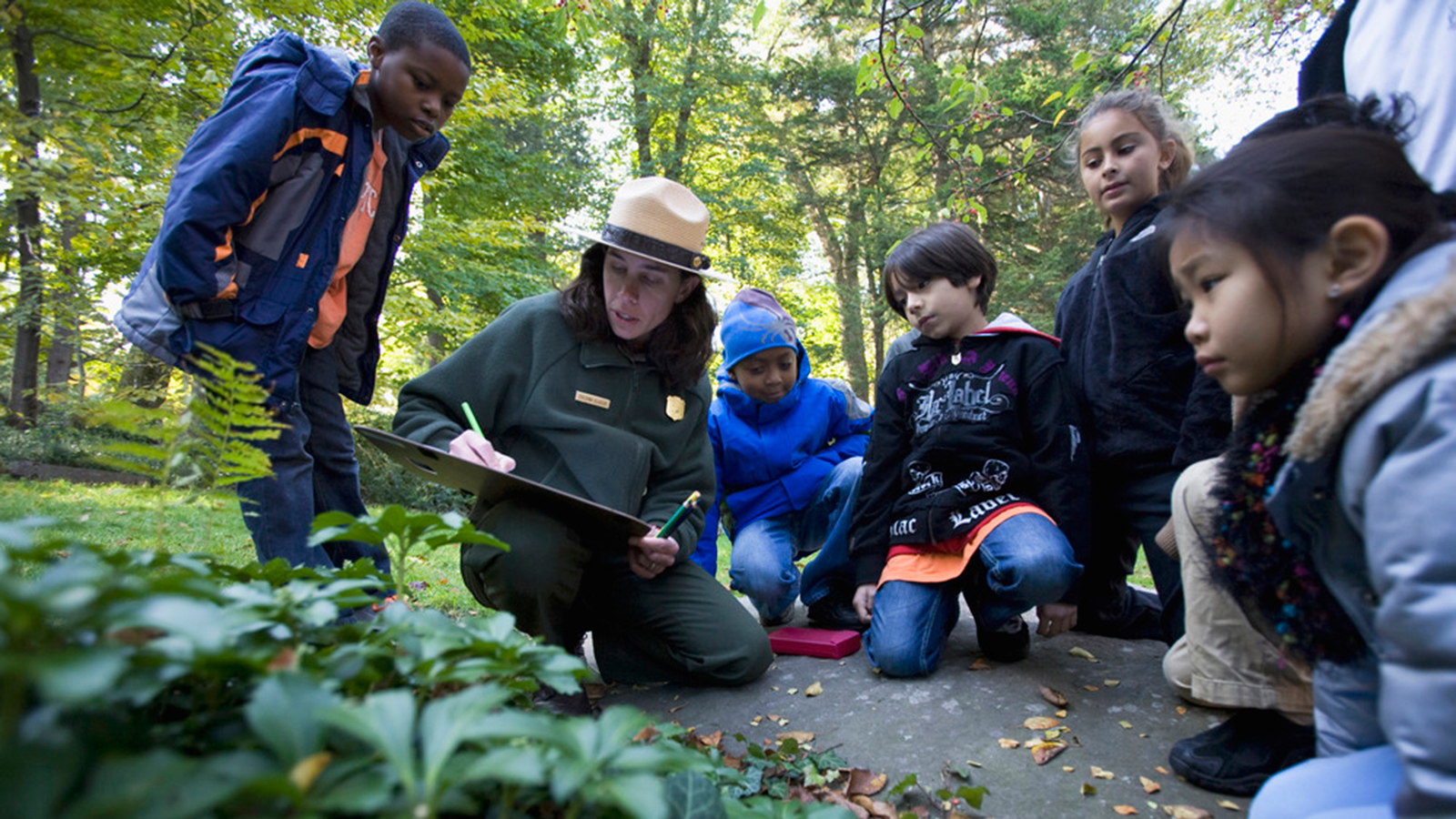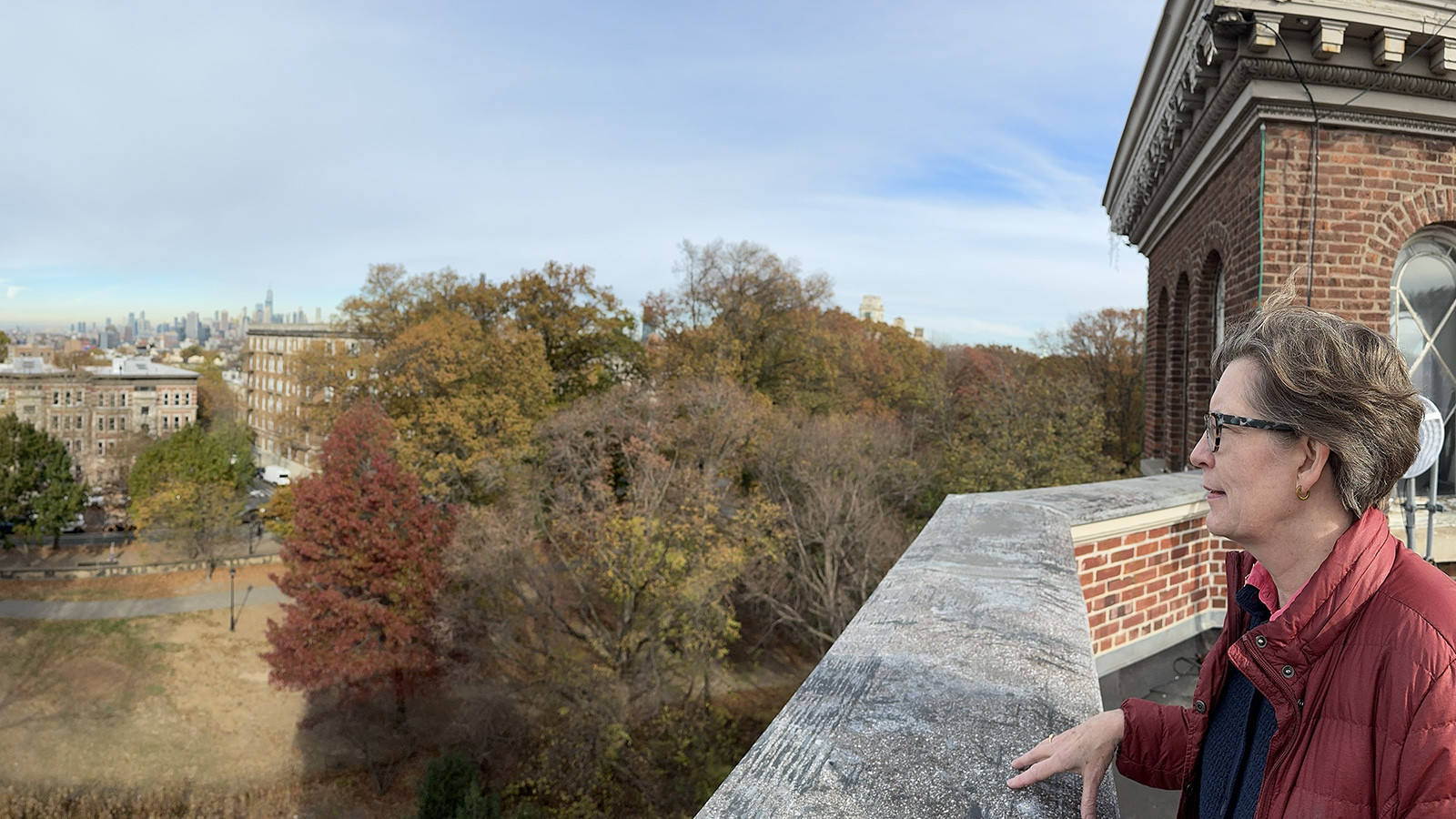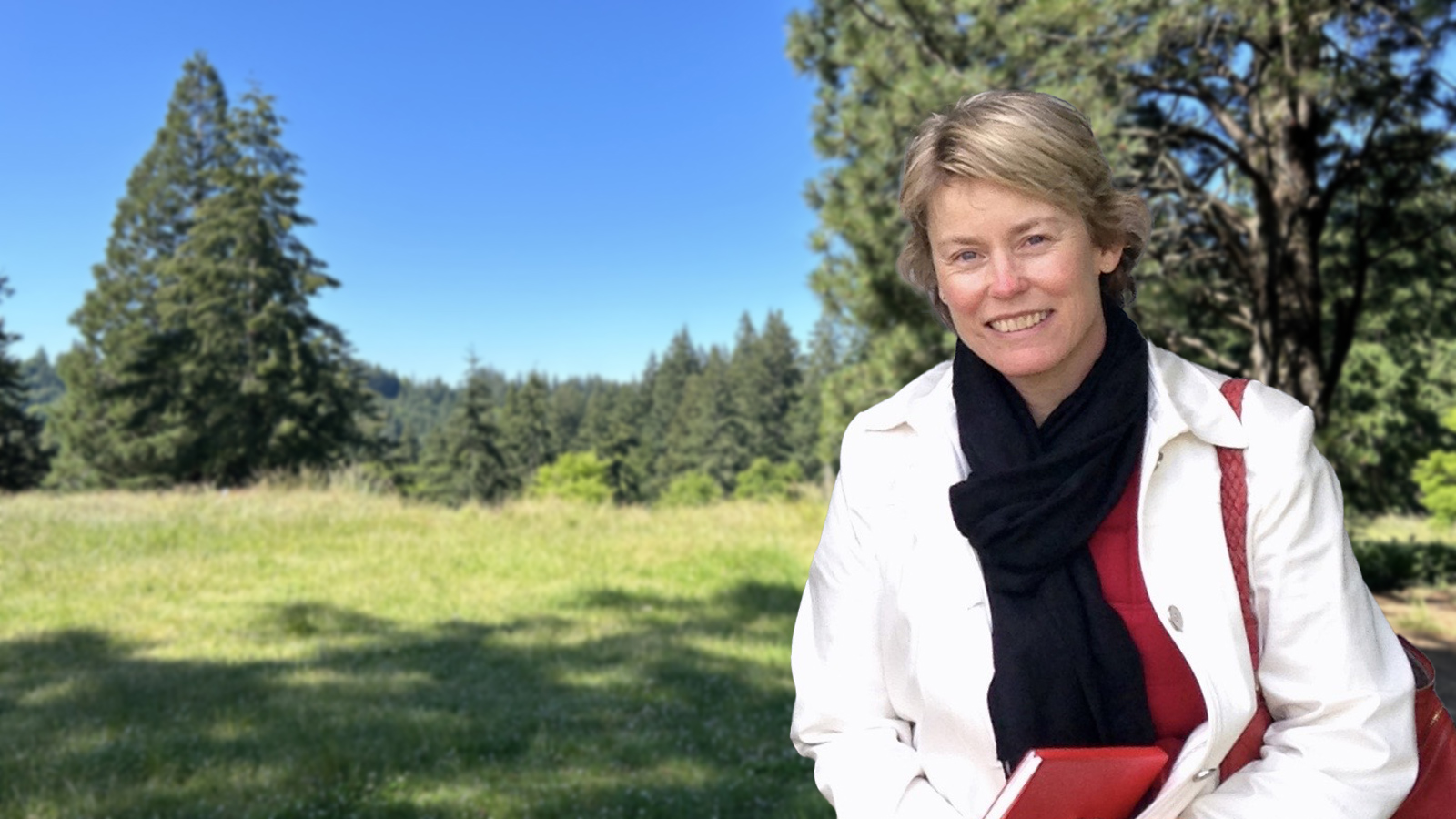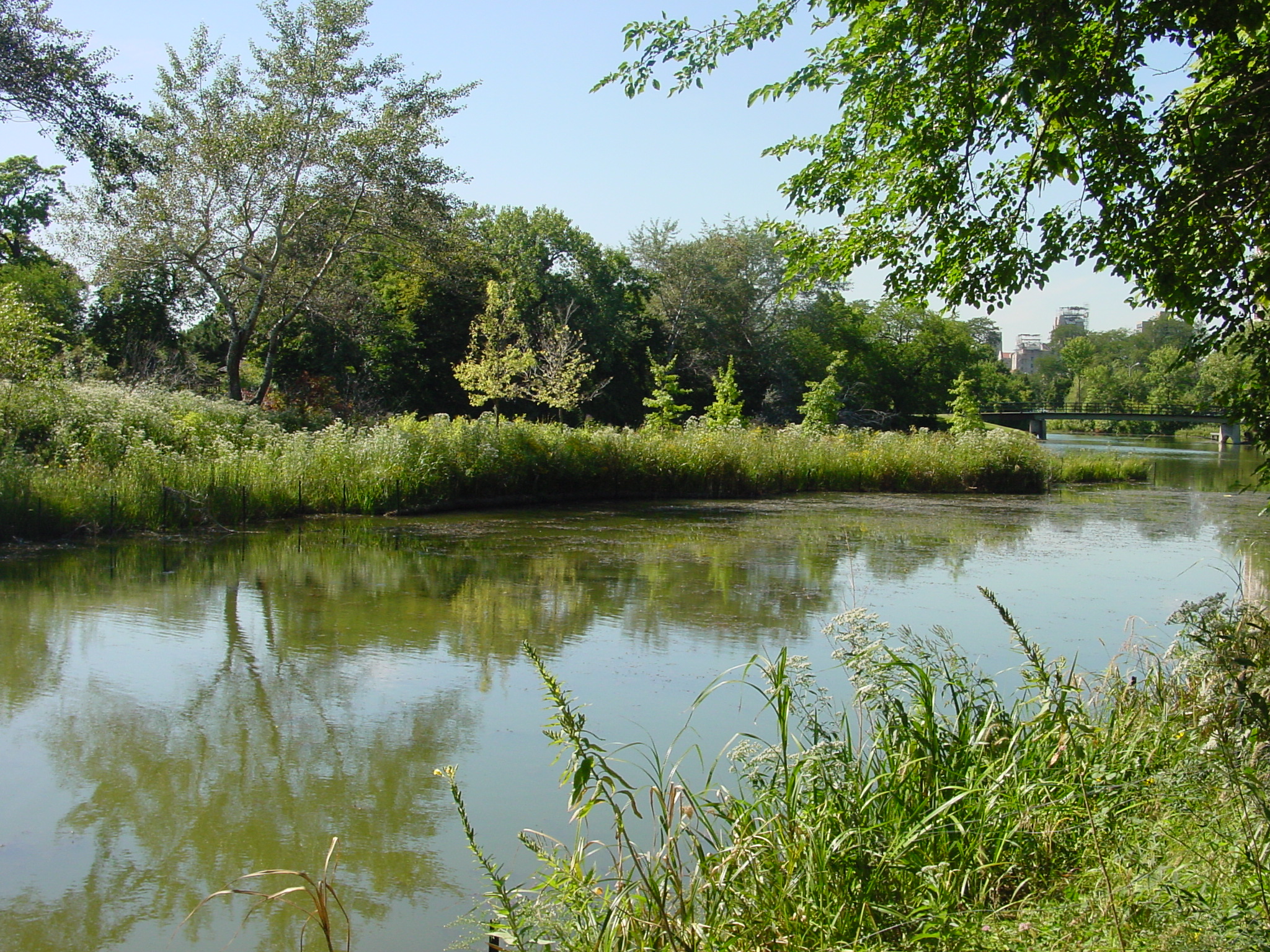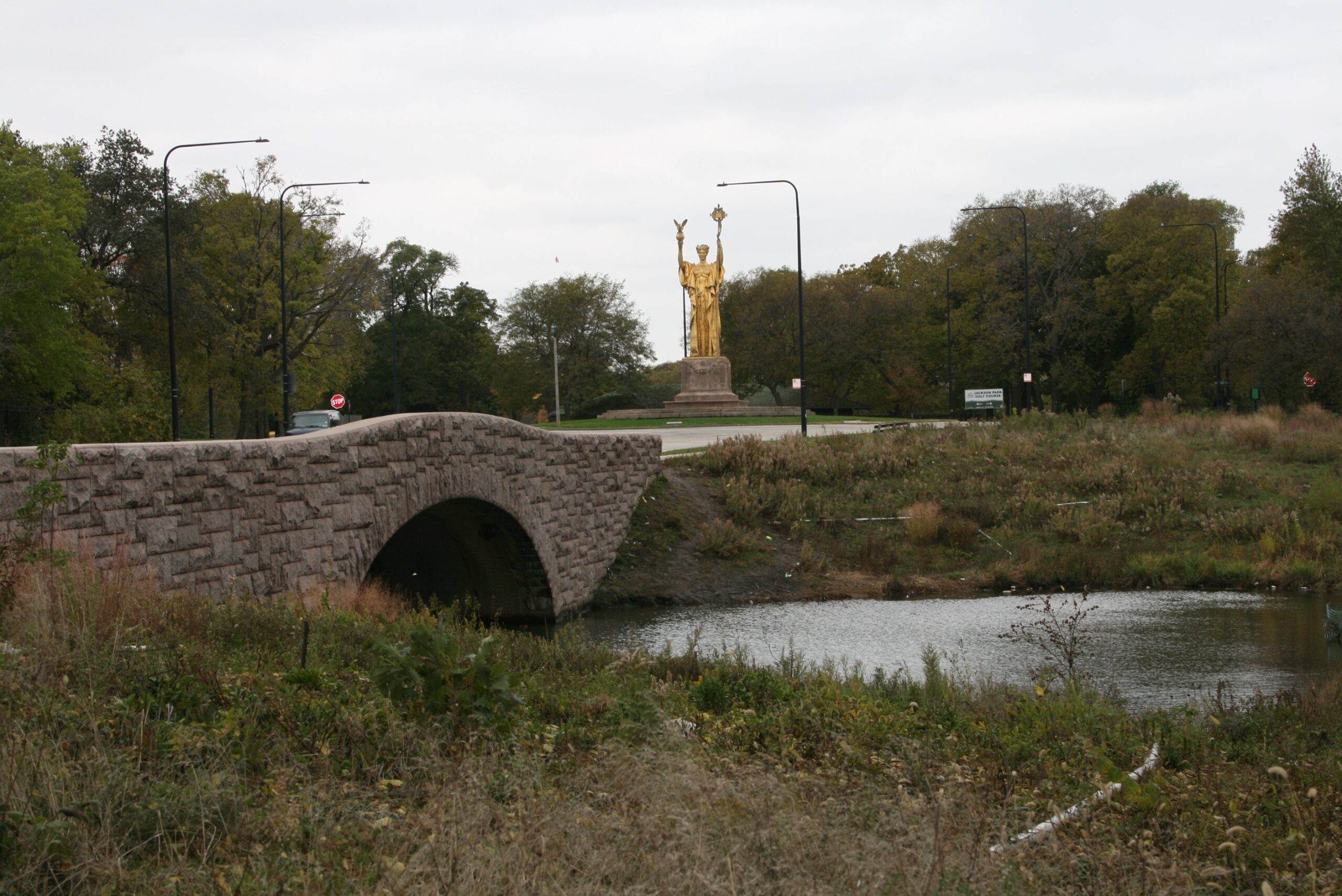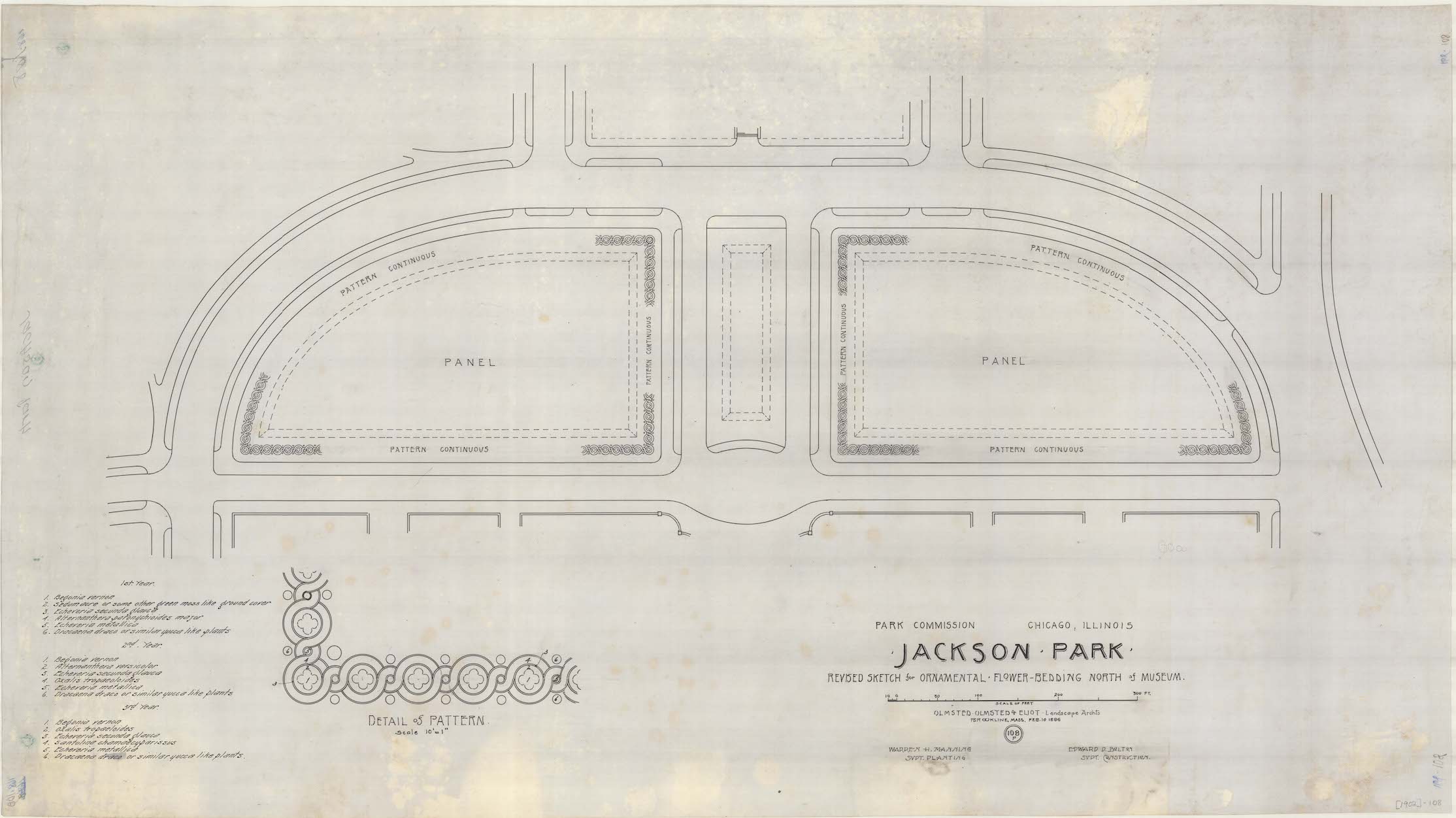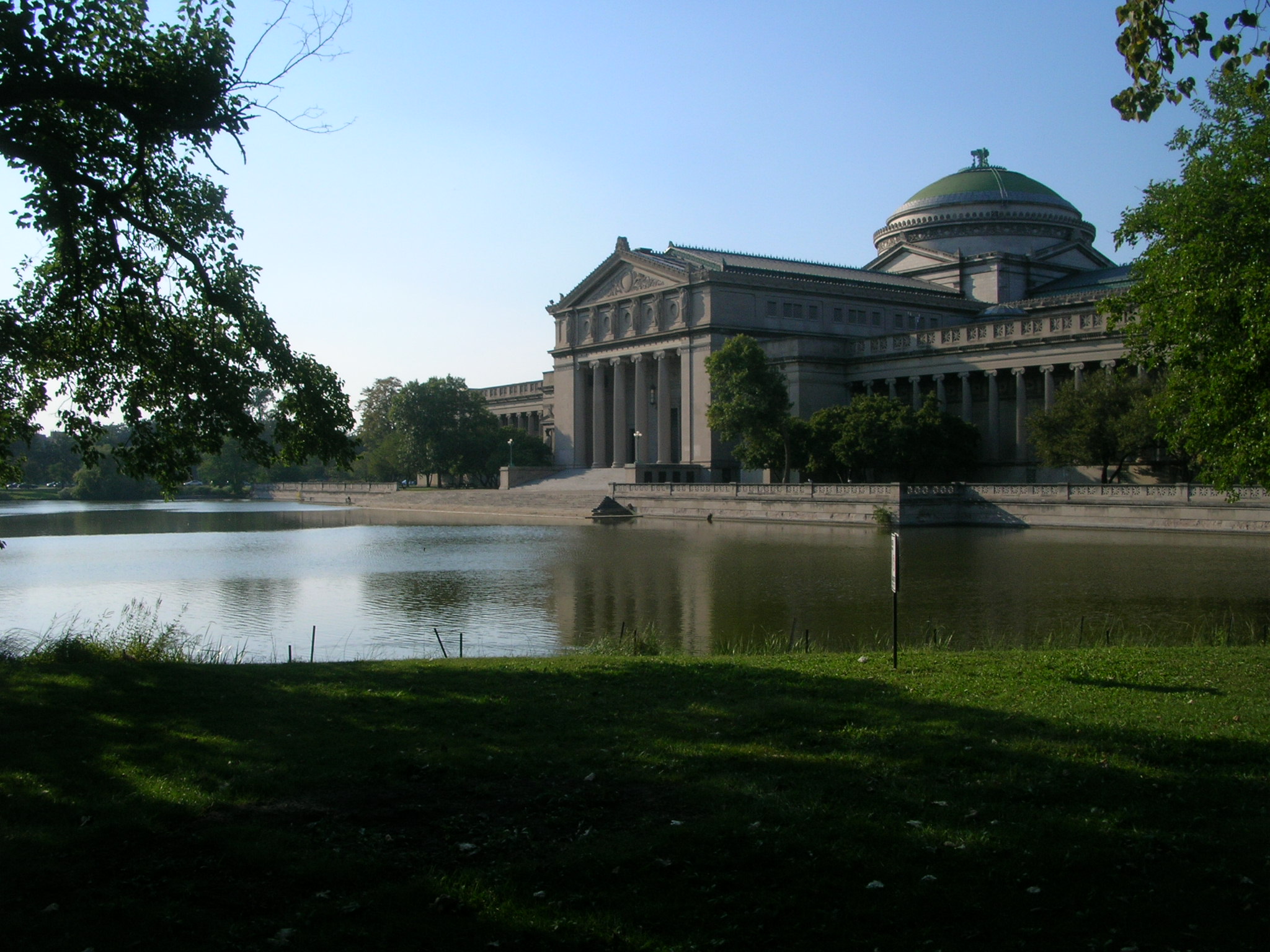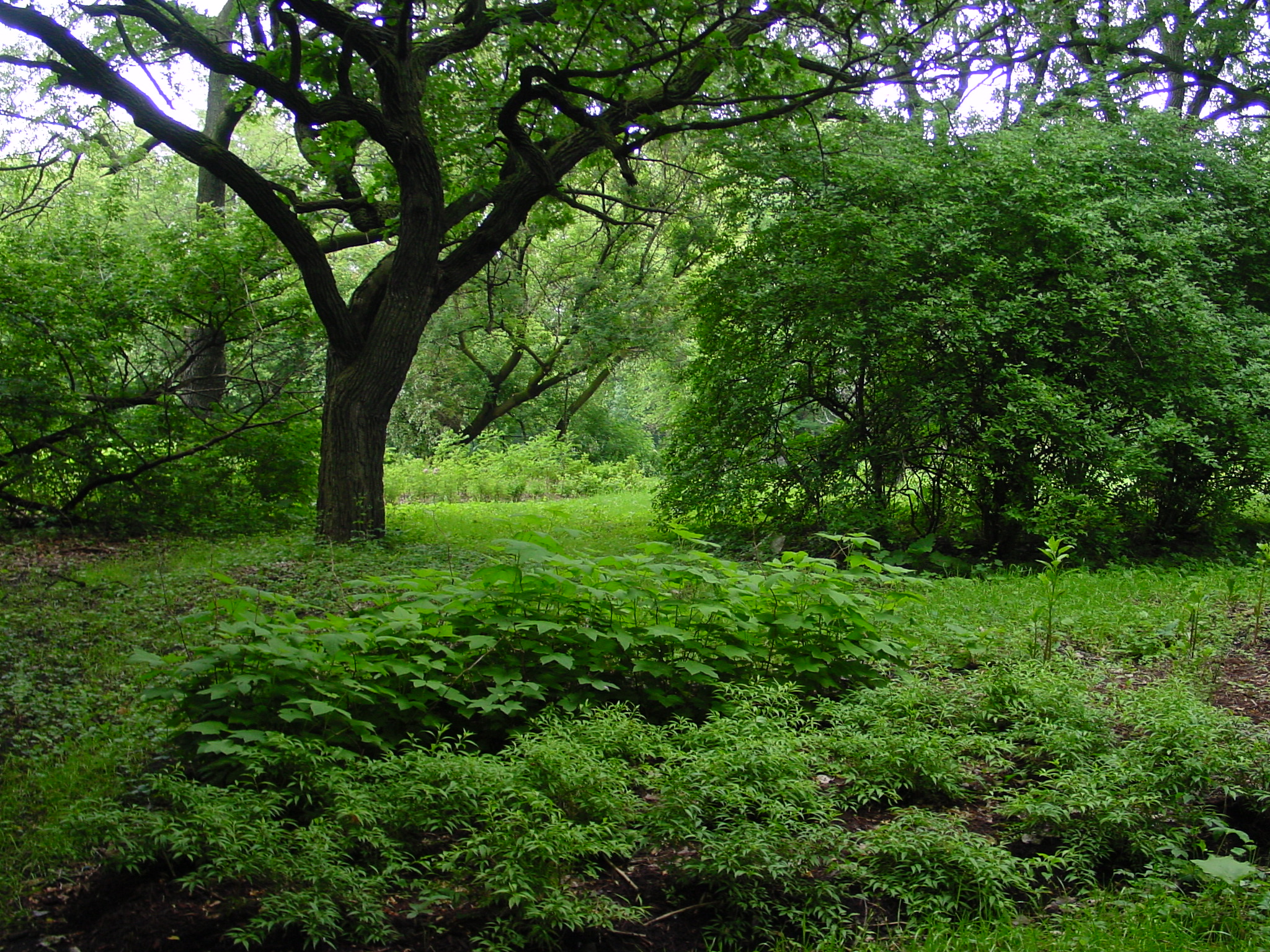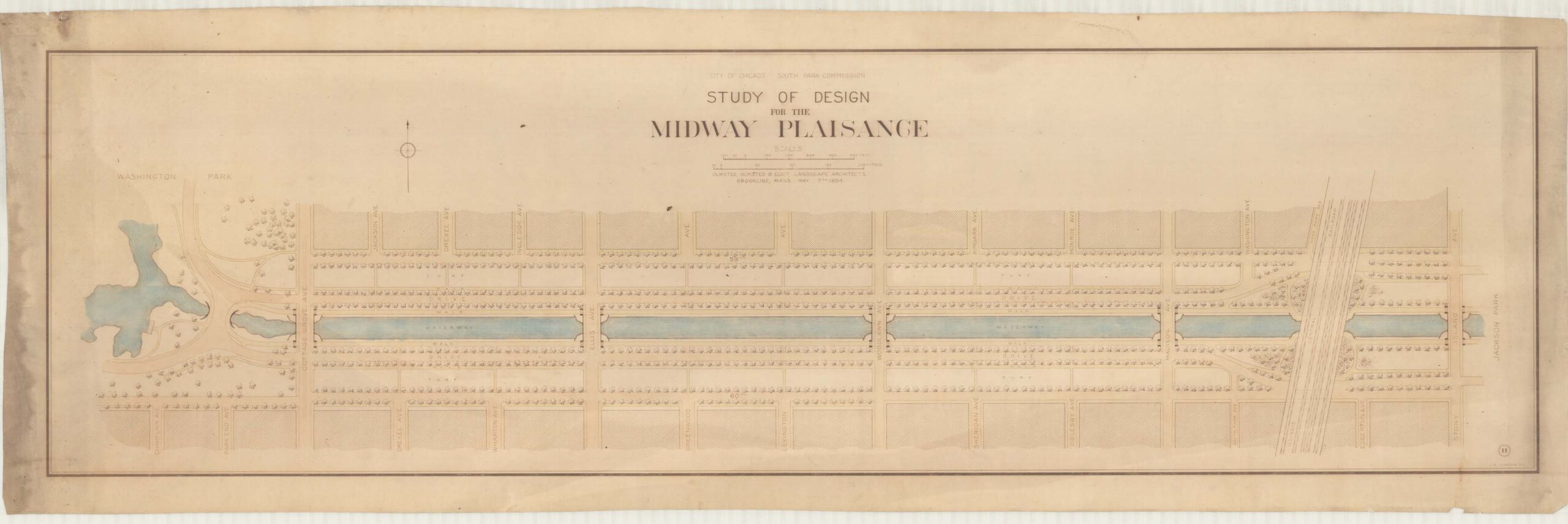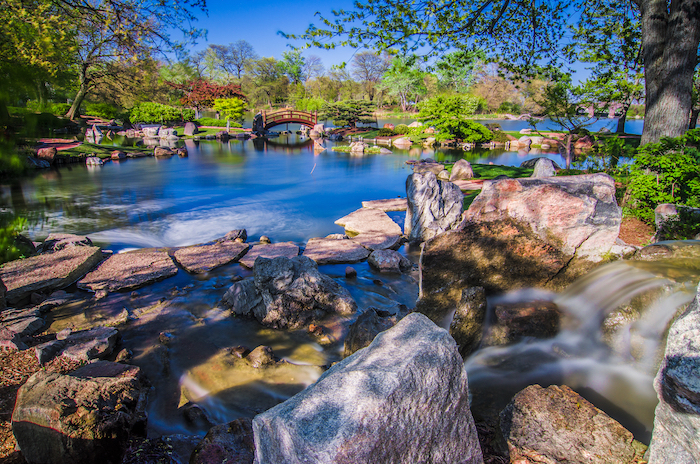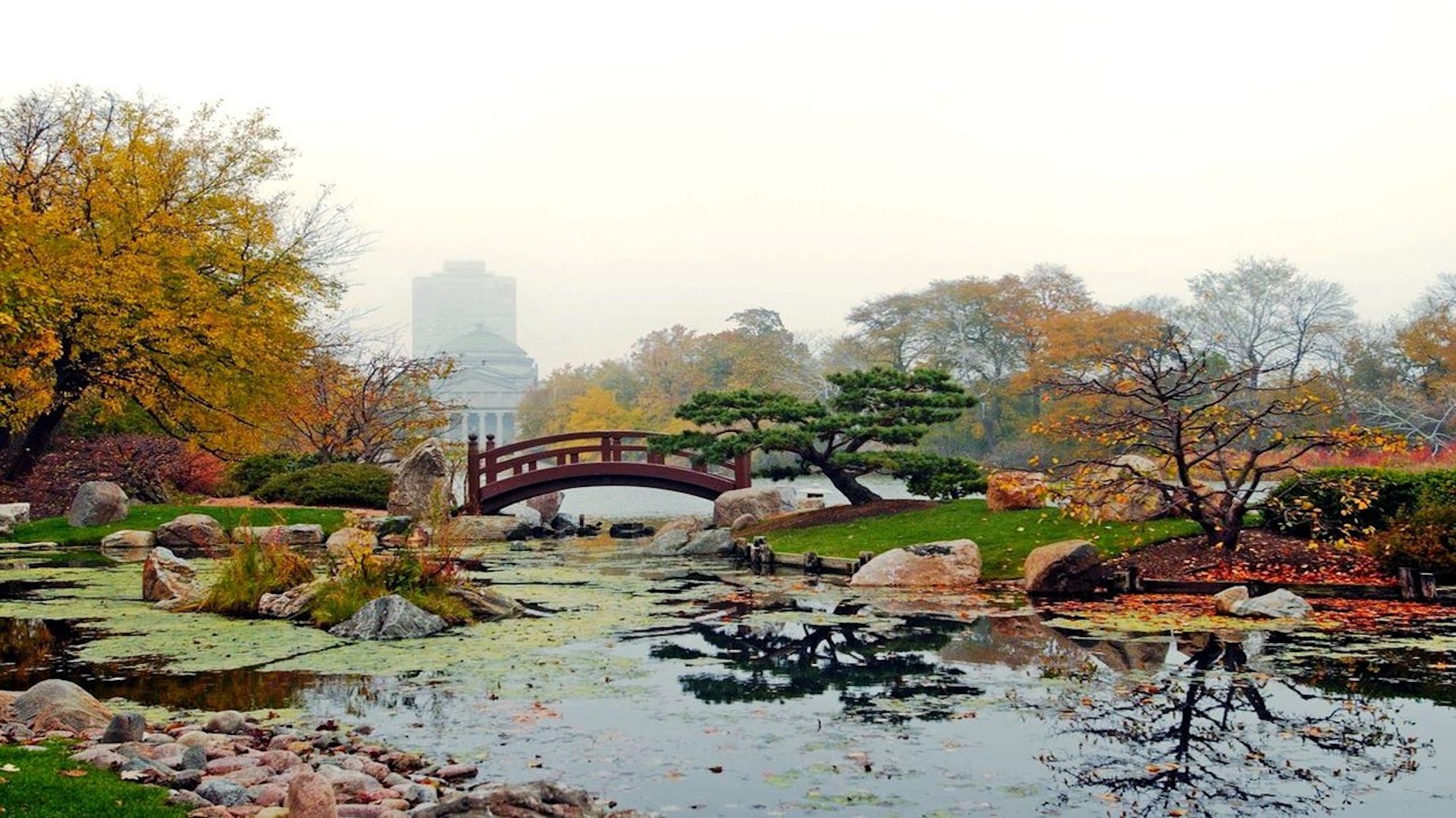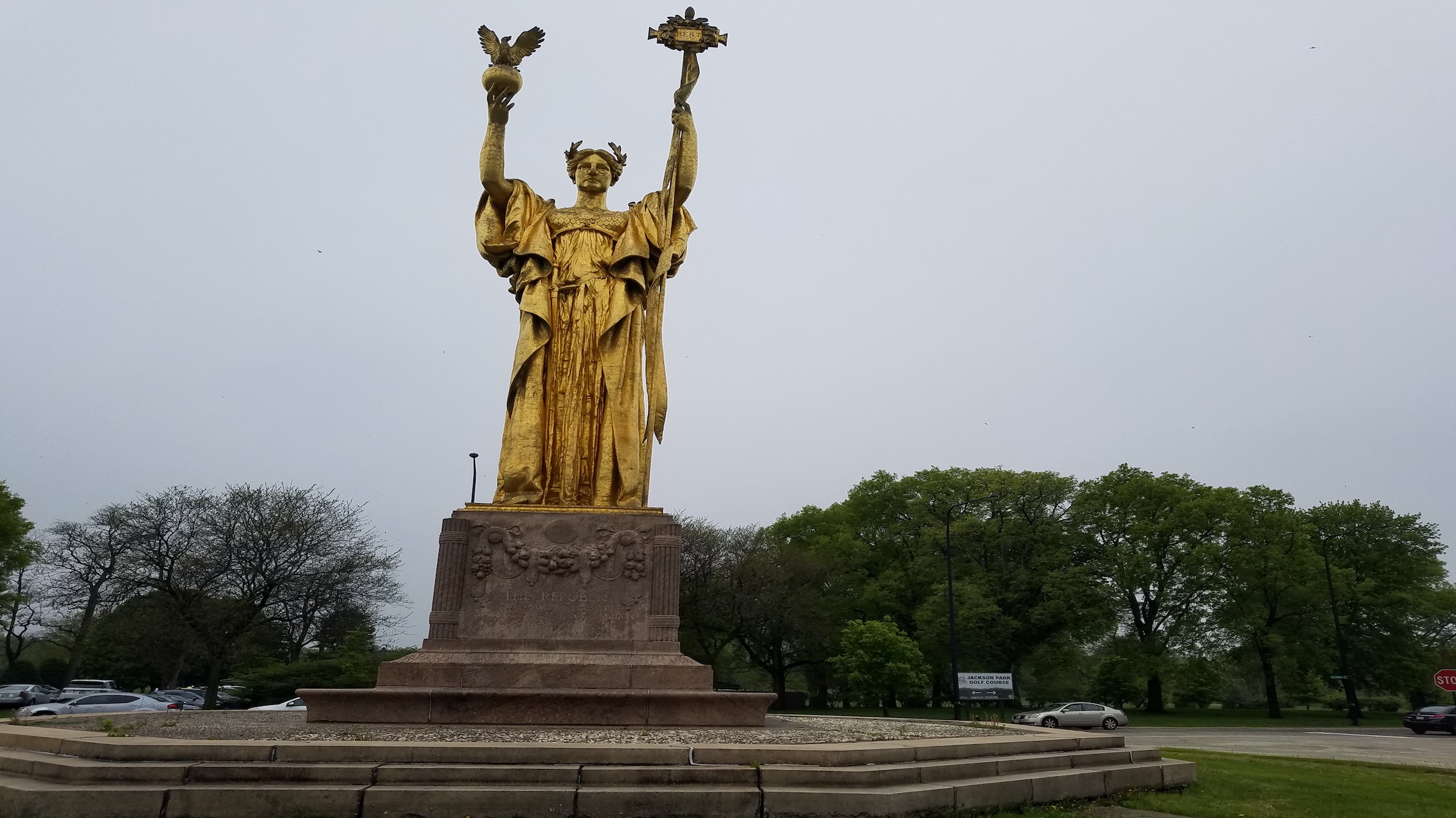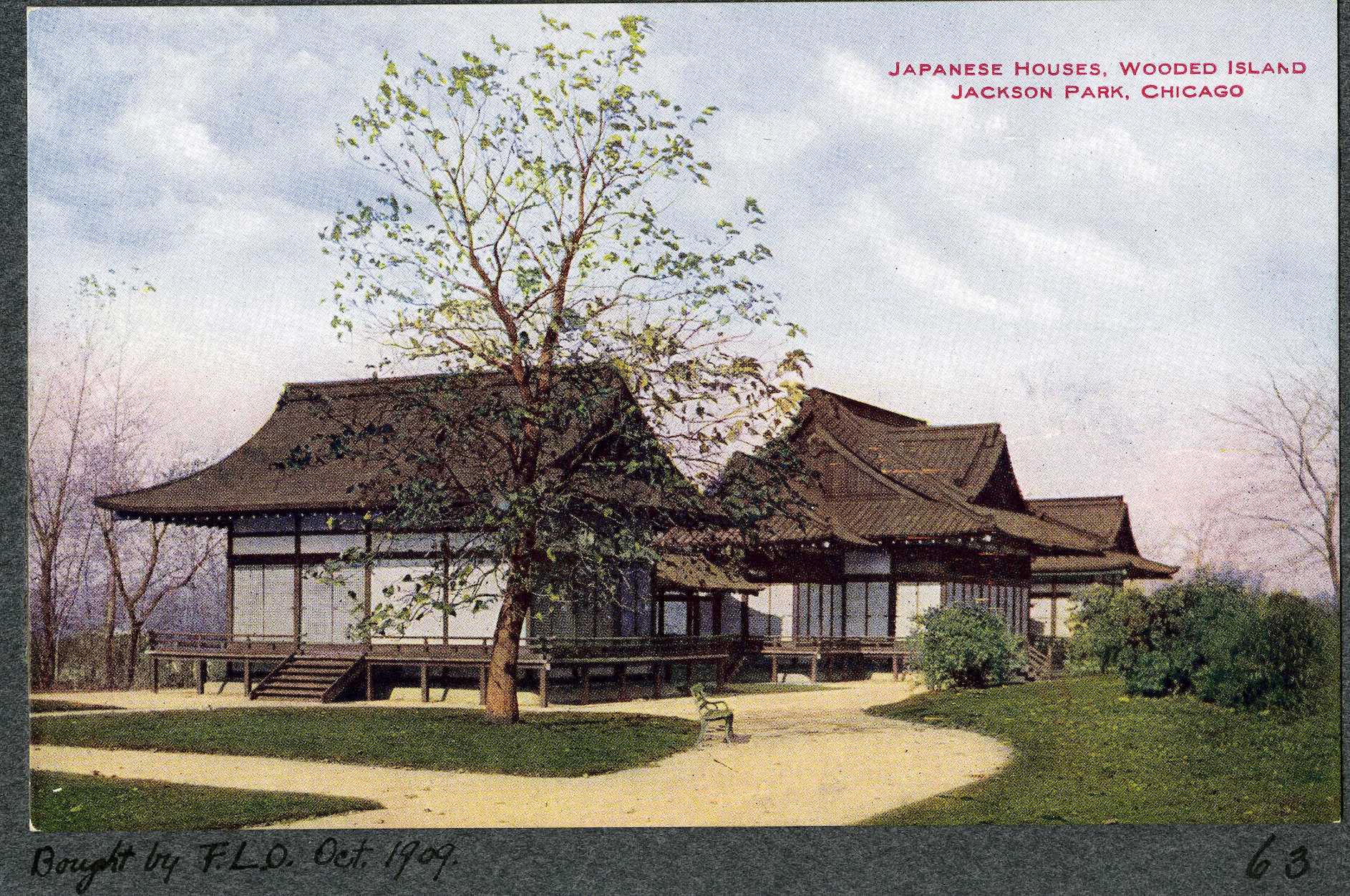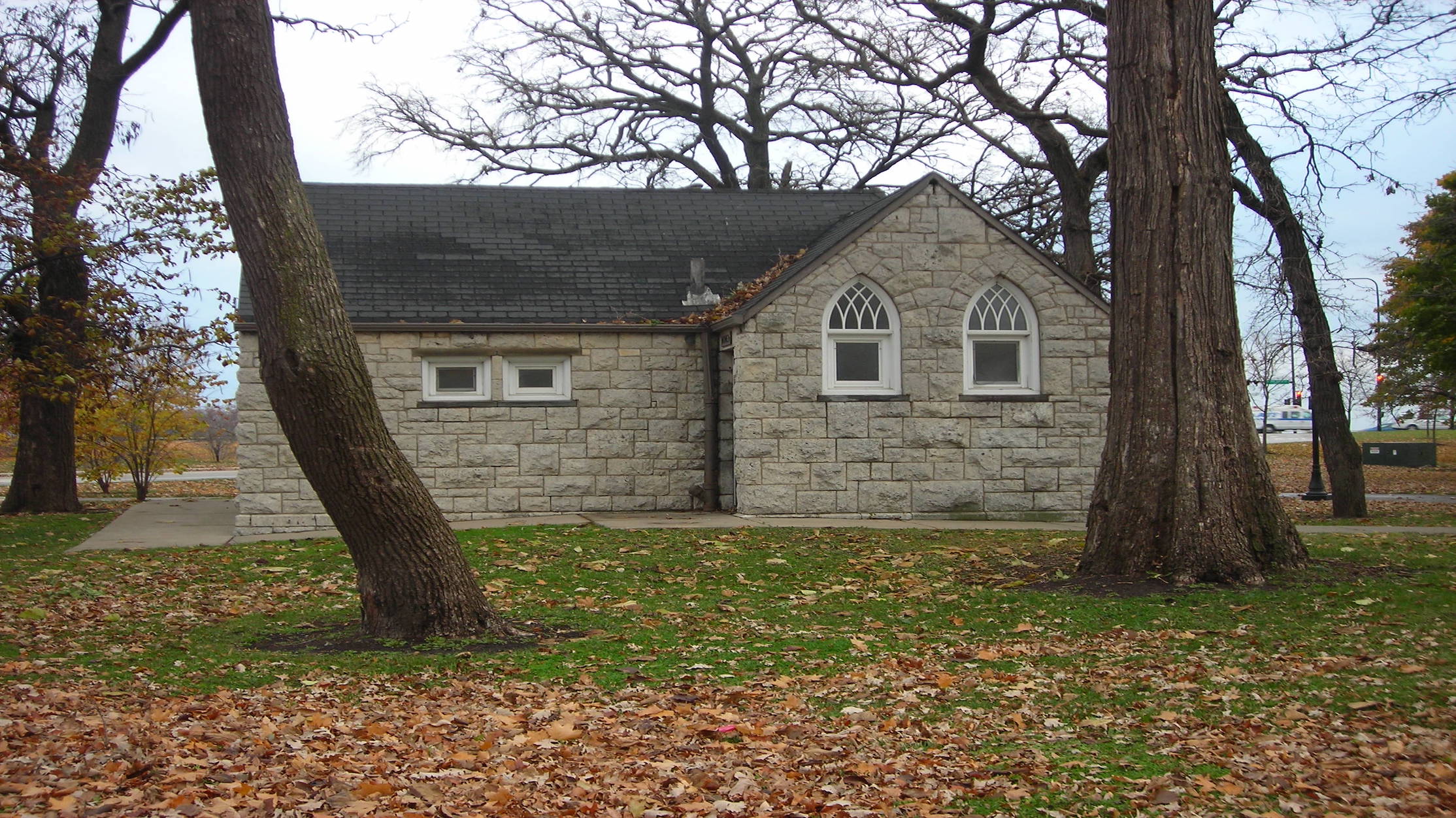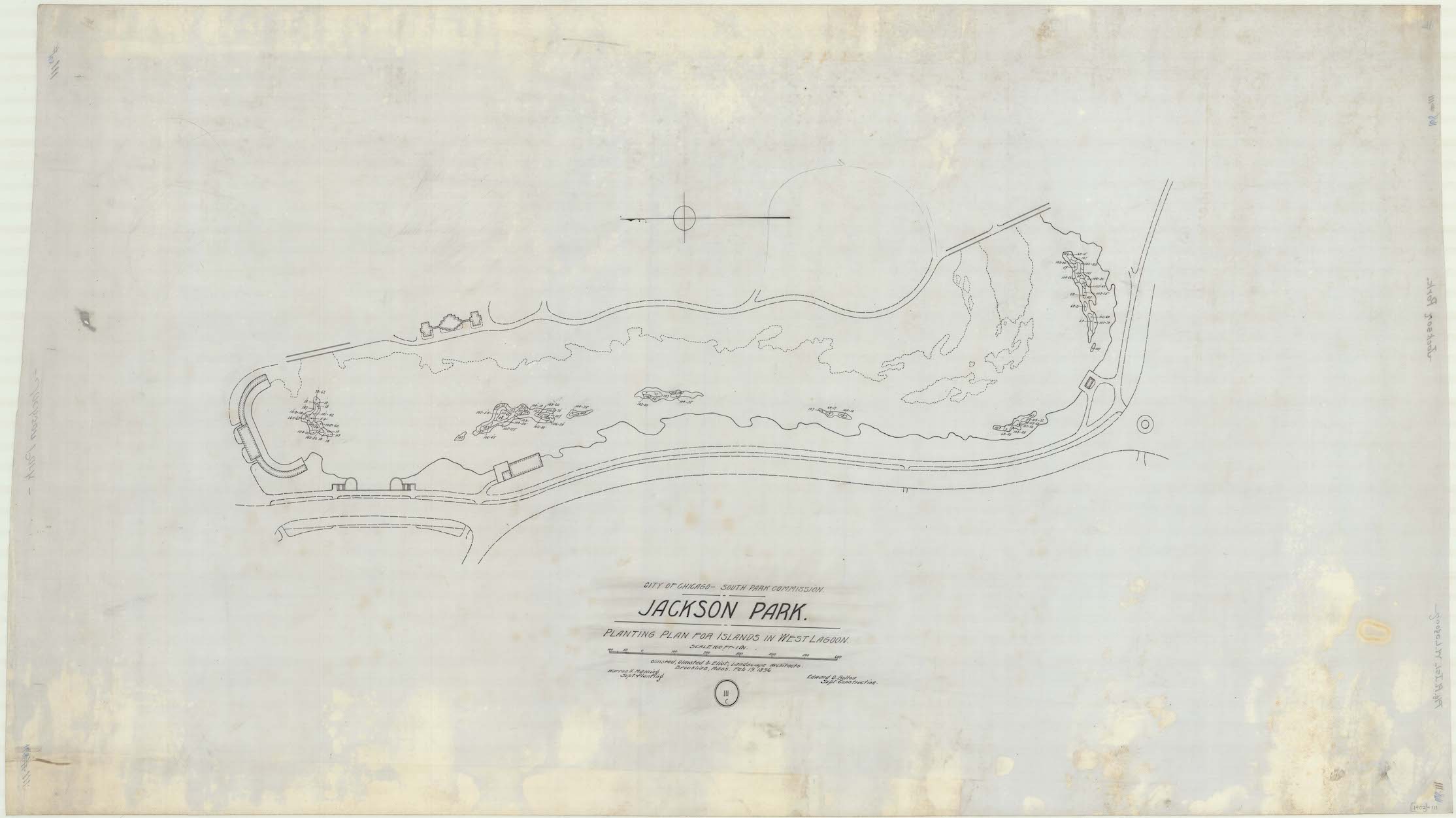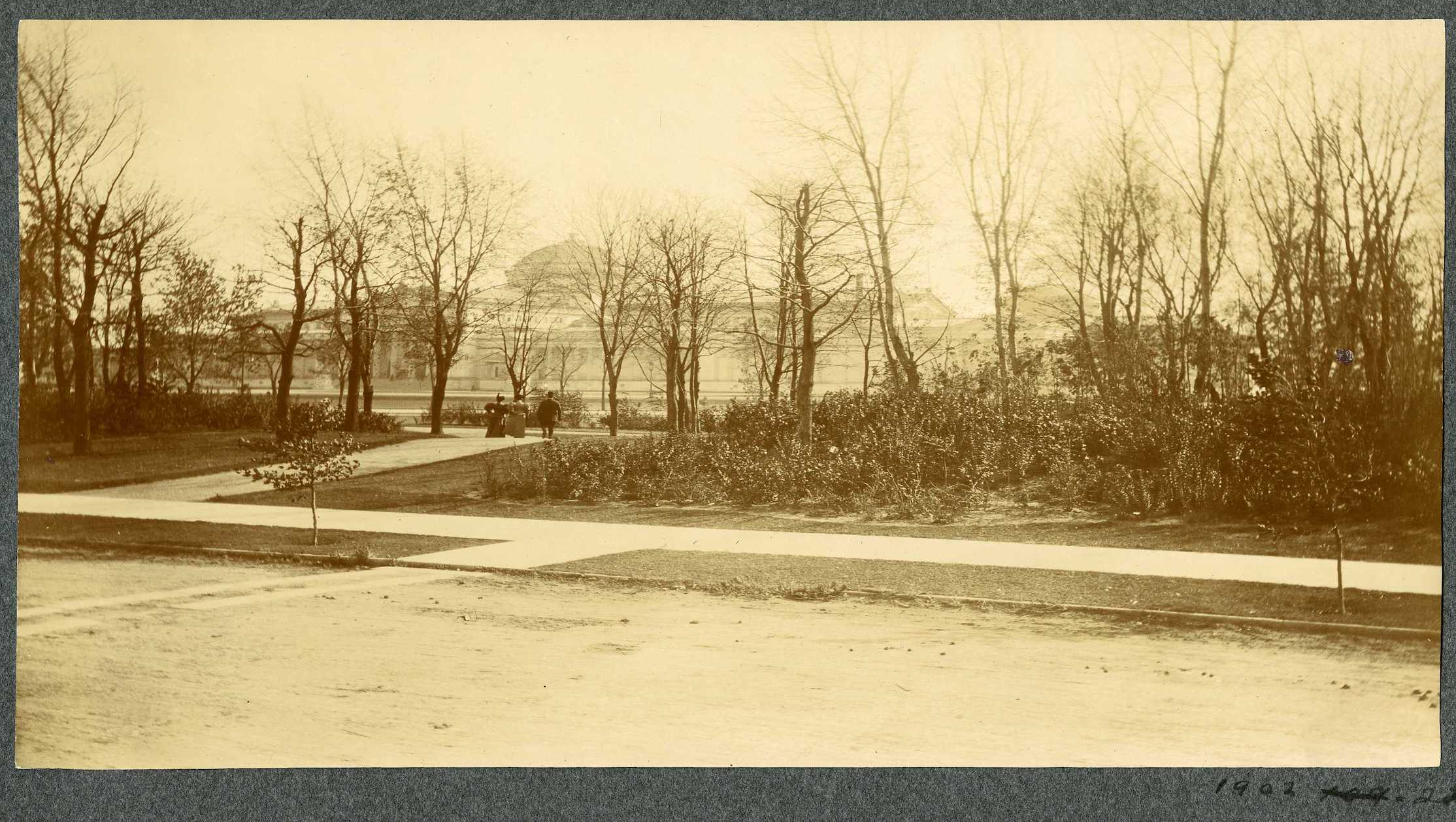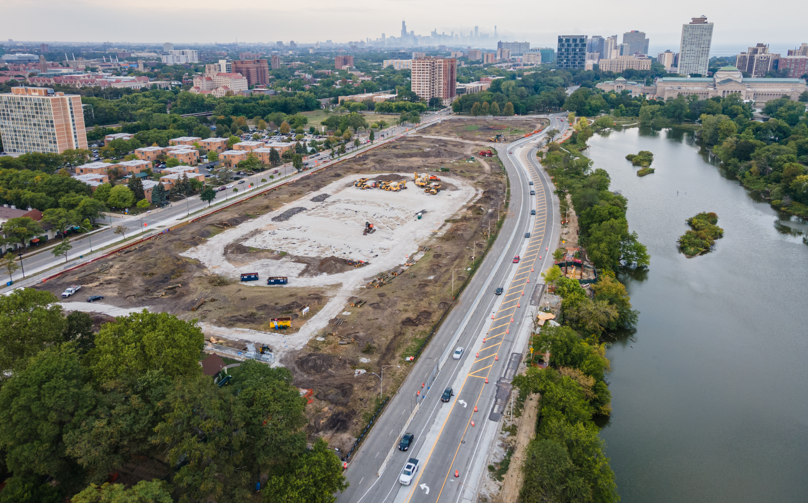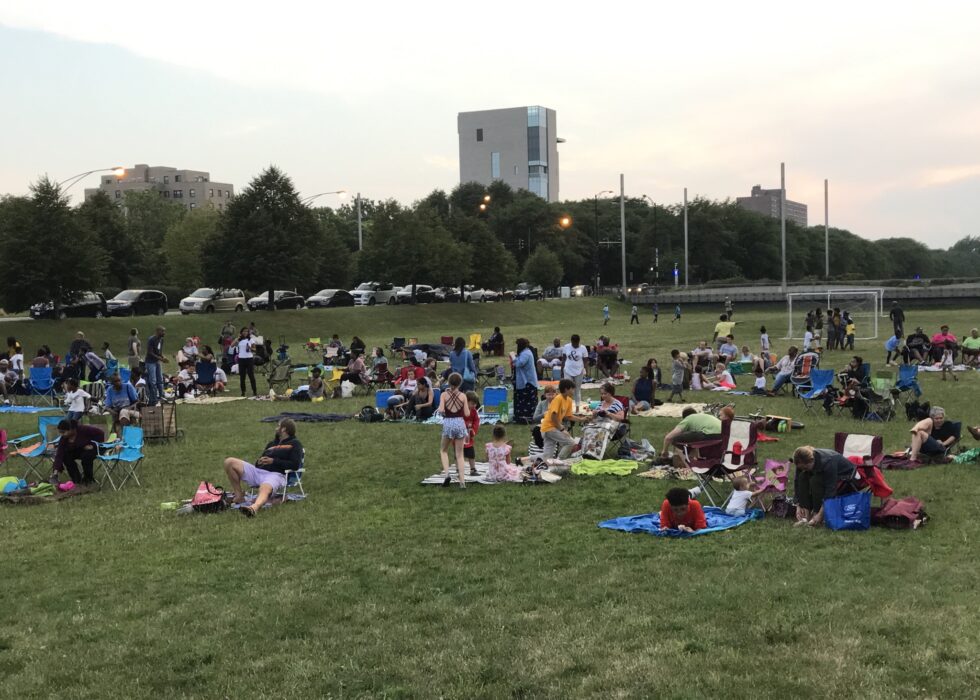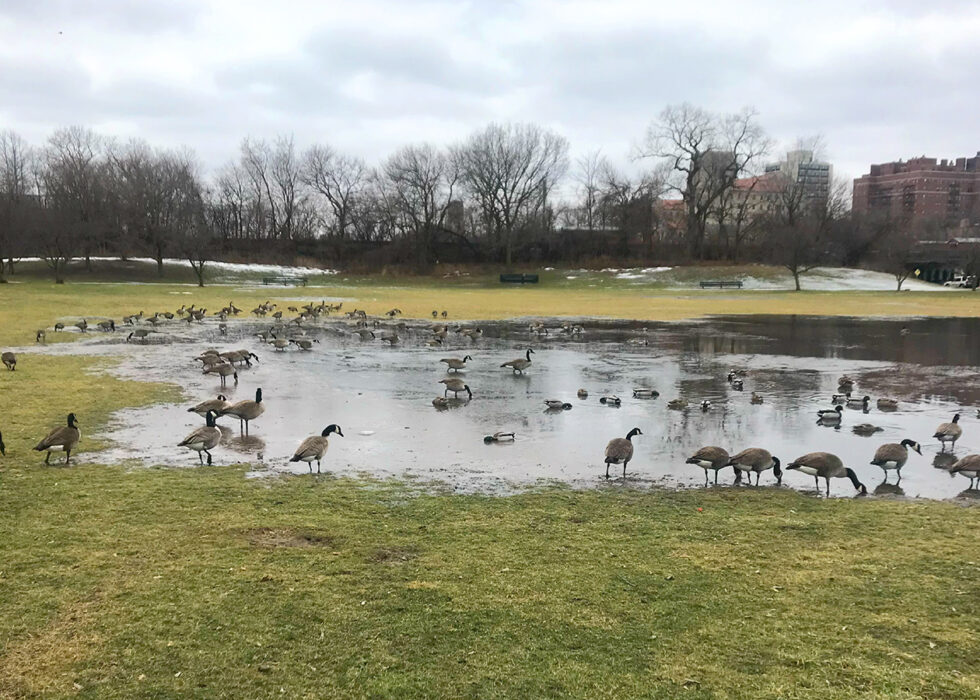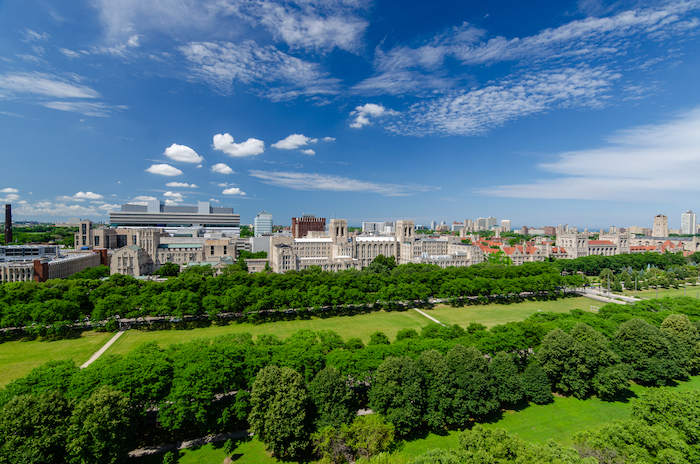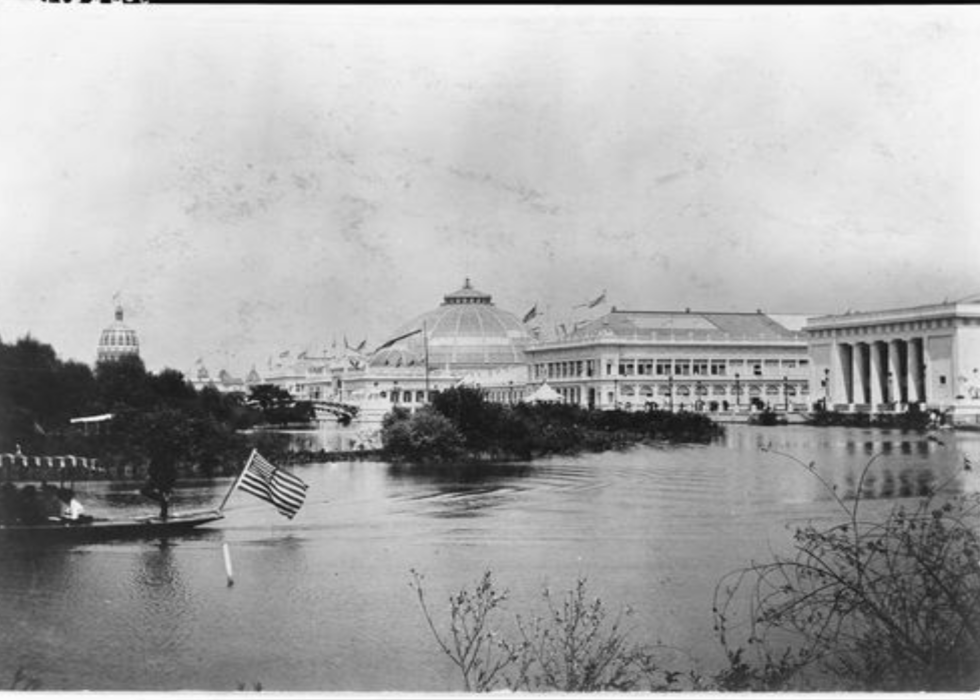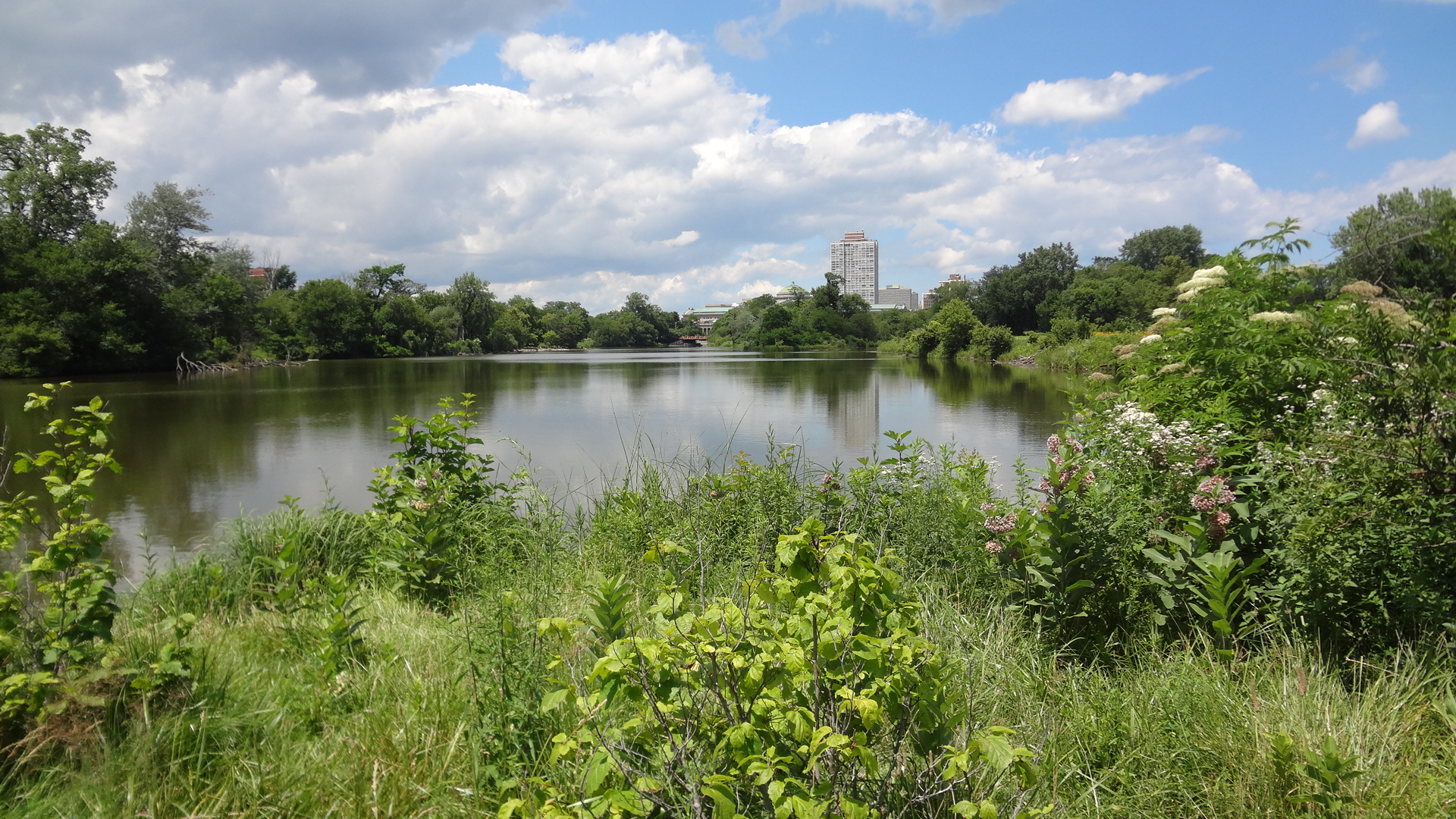
Chicago, Illinois
About Jackson Park
Stretching along Chicago’s south lakefront, Jackson Park was initially designed in 1871 as part of Frederick Law Olmsted and Calvert Vaux’s plan for the 1,055-acre South Park.
Although Olmsted was known for recognizing “the genius of the place,” he was discouraged by the flat and marshy conditions of the unimproved site. Olmsted believed, however, that the site had one great asset — its relationship with Lake Michigan. Using water as a unifying theme, Olmsted and Vaux drafted a plan in which boats could enter the Eastern Division (Jackson Park) from Lake Michigan, navigate through an intricate series of lagoons and down a formal canal to a lagoon in the Western Division (Washington Park). Various problems delayed the project and only a small area of Jackson Park was initially improved.
In 1890, after extensive lobbying efforts from the city of Chicago and Olmsted himself, the undeveloped Jackson Park was chosen as the site of the World’s Columbian Exposition (00274). Olmsted helped transform Jackson Park’s landscape into the famous “White City” fairgrounds and created a layout with new structures large enough to accommodate the international event. Contrasting the white Beaux Arts buildings being constructed, Olmsted focused on emphasizing the park’s naturalistic features and called for extensive dredging to design a series of interconnected lagoons. During a six-month period in 1893, the Fair dazzled an estimated 27 million visitors.
At the close of the Fair, Olmsted’s firm was hired to return Jackson Park from fairgrounds back into parkland. The plan fully capitalized on views of Lake Michigan and retained two important buildings from the Exhibition— the Museum of Science and Industry and the Japanese Pavilion, which was destroyed by fire in 1946.
Today, the museum, a restored Japanese Garden and a 1918 commemorative version of the Statue of the Republic are visual reminders of Jackson Park’s history. Despite the significant changes currently taking place on the western edge of the park, much of the Jackson Park landscape (lagoons, historic bridges, winding paths and the Wooded Island) still reflects Olmsted’s early vision.
Shared Spaces
Spotlight on…Jackson ParkGray Gardens
This Cambridge, Massachusetts neighborhood is an example of residential subdivisions that became the firm’s primary focus during the 1920s.




